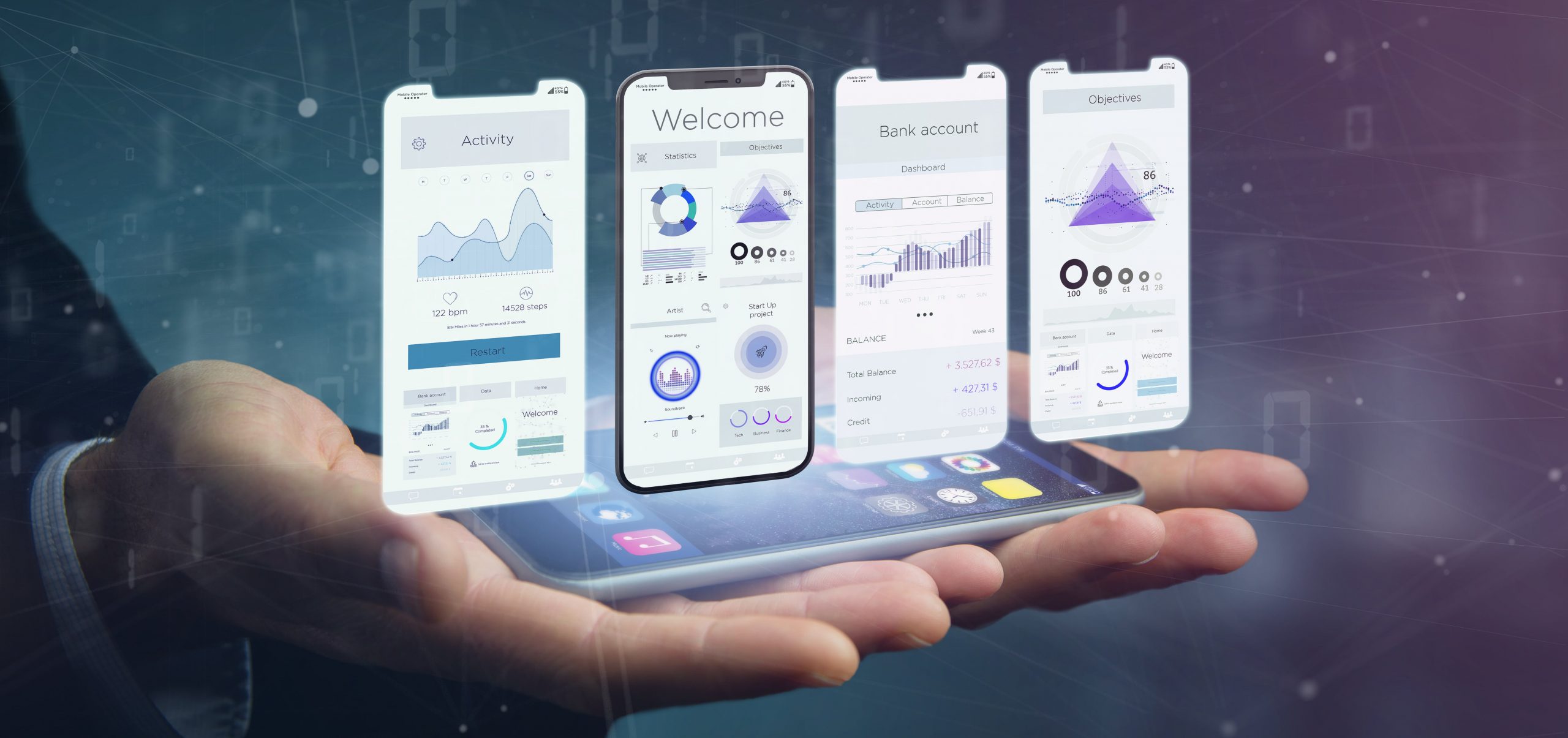admin

Table Of Contents
Google-powered Flutter is a mobile application development platform that uses the optimized programming language ‘Dart,’ which helps create fast, cross-platform apps. In this article, we will explore all the reasons why you should consider it for your mobile app development needs.
Mobile apps have become an integral part of our daily lives. Statistics show that just in the first quarter of 2021, 143.6 billion games and apps were downloaded through the App Store and Google Play. Moreover, it is expected that mobile applications will generate more than $935 bn in revenue by 2023. Thus, it is quite a lucrative undertaking to consider if you’d like to make money with minimal effort.
Mobile apps that can be used on both, iOS and Android platforms are referred to as “cross-platform apps”. And because of technological advancements, cross-platform mobile app development has become super simple. Arguably, the best platform for the development of such apps in the market at the moment is Flutter.
Powered by Google, Flutter is a Frontend Framework that developers can use to build natively compiled web and mobile applications using one codebase. A single codebase means one coding language to create apps for two separate mobile operating systems, such as Android and iOS.
Flutter comprises two assimilated parts. One is the Flutter framework, a library for editable and reusable UI elements. The second is an SDK, which helps compile code and convert it into native machine language to be used for cross-platform app development. The Flutter programming language is ‘Dart,’ which was developed in 2011 by Google. It is a typed object coding language whose syntax can be compared to JavaScript. It is generally used for cross-platform development.
If you’ve been considering Flutter for mobile application development but not sure if it’s the right fit for your needs, here are some reasons why you should consider it.
Table Of Contents
According to a 2021 survey taken by developers worldwide, Flutter took the lead as the most popular cross-platform mobile development application framework. It revealed that 42% of developers used it. This alone is a testament to the ease, cost-effectiveness, and performance quality it provides. Let’s discuss why one should consider the Flutter platform for app development.
The QA process is generally a time-consuming and costly part of the cross-platform app development process. However, Flutter reduces this time significantly since it uses a single codebase. Thus, after testing it on one mobile system, you can rest assured that it is bound to work efficiently in other environments as well. This, in turn, saves money and time, as developers won’t need to write multiple automated tests and instead rely on only one to use on all platforms.
The cost of a cross-platform app developer starts from $15,000 to $20,000. Since Flutter already uses a single codebase for cross-platform mobile development, it substantially reduces the resource allocation and time consumed. This, of course, will reduce the cost of developing the applications. Thus, using the Flutter app development platform is an excellent choice, especially for small businesses that are just starting out and don’t have a lot of budgets to allocate for application development.
Flutter allows businesses to create and launch their mobile app for different platforms without investing in more than one codebase. And if you need an all-in-one company to create the finest cross-platform app using Flutter, Trango Tech is the right fit for your needs.
The Flutter developer emphasizes providing code that performs exceptionally well. It offers several built-in features, such as Animations, Hot Reload and Widgets. Hot Reload enables devs to see changes made to their app in real time. This allows them to address any concerns quickly and efficiently. Animations help devs create attractive and complex applications without spending extra time coding, which would be necessary when building a native application. Widgets help create customized apps in a short span of time.
The Widgets solution offered by Flutter enables developers who want to build UI elements quickly. Since Widgets are fast, editable, and elastic, they make the app development process extremely satisfying and easy. Furthermore, they accentuate quality and leave a good impression on users.
The Flutter platform for mobile app development is marketed as the best for application compatibility. Let’s take a quick look at the different languages, platforms, and devices it provides compatibility with.
There are three languages that Flutter development is compatible with, Dart, C, and C++. Let’s take a look at them in a bit more detail:
As we touched upon before, Dart was a coding language developed by Google that is optimized to create a codebase for multiplatform that is fast and efficient. It is known for building UI with features like
Its syntax is quite similar to JavaScript, making it easier for developers to adapt as well.
Basically, Dart virtual machine and the core graphics framework are implemented using C/C++ languages. During the coding phase, before your program or library can utilize the FFI library to bind the native code, you have to ensure that it is loaded, with its symbols detectable to Dart. You’ll need to bundle the C/C++ source within the chosen Flutter plugin, binding to them through the Dart FFI library on iOS and Android.
Since Flutter programming uses one codebase which can be deployed on multiple platforms, it simplifies and speeds up workflows. Moreover, its graphics are hardware accelerated to create high-performance applications that run on all major platforms. Flutter mobile has Material and Cupertino designs built into its framework, ensuring that they run seamlessly whether you deploy the app on Windows, macOS, Linux, Android, Web, or iOS.
Flutter has a robust rendering engine through which you can control every pixel, allowing its extensive Widget library to adapt automatically to all screens. The screens it is compatible with are computer screens, embedded devices such as smart watches, smart home technology, car infotainment systems, etc., and mobile screens.
Flutter mobile application development provides developers several technical benefits too, such as:
Flutter supports the use of shared packages that different devs contribute to the Dart and Flutter ecosystems. Essentially, this enables quicker app building as you don’t need to develop the application from scratch. It also supports Plugins. Let’s discuss both in more detail:
Plugins are a kind of package which introduces platform functionality to an app. For example, you can use a plugin to enable apps developed with Flutter to use the device’s camera. These plugin packages can be written for iOS (using Objective-C), Android (using Java or Kotlin), Linux, Windows, macOS, web or a combination.
A basic package for Dart is a directory that contains a pubspec file. Moreover, it can also include dependencies that are listed within the pubspec, apps, tests, Dart libraries, examples, images, and resources. If you go to the pub.dev website, you can find several packages developed by the Dart and Flutter community and Google Engineers. You can use them to create a truly unique, fantastic app. By hiring an esteemed app development company like Trango Tech, you can ensure that all additional requirements and demands can also be met.
Widgets are at the core of the layout mechanism of Flutter mobile application development. Pretty much everything’s a widget, such as layout models. The text, icons, and images you can see within Flutter apps are also all widgets. But even the backend of Flutter also consists of widgets, such as grids, columns, and rows that help to align, arrange, and constrains the visible widgets. You essentially can develop a layout via the composition of different widgets that can help build other, more complex widgets. It’s beneficial as it makes the process quite straightforward and better organized.
Firebase, backed by Google, is an application development platform mainly used to build games. You can also integrate it to be used during the Flutter mobile application development process. It is pretty easy to integrate it. All you need to do is follow these steps:
Flutter Mobile Application Development is an excellent option if you’re looking for a cost-effective, quick, and hassle-free way to develop cross-platform applications. It’s a perfect option for small businesses, as it also allows you to make changes on the go, maintaining the standard users expect from you. If you’d like to consult professionals who are skilled in Dart and know the ins and outs of Flutter, then consider Trango Tech, the best mobile app development company in the market
Table Of Contents

